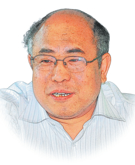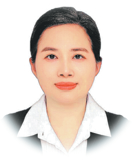Expanding the horizon for elderly well-being
Developing a national-level plan, optimizing services and improving the quality will help the senior care industry


China is transitioning to an aging country. Data from the National Bureau of Statistics show that by the end of 2024, the population aged 60 and above had reached 310.31 million, representing 22 percent of the total population, while those aged 65 and above totaled 220.23 million, accounting for 15.6 percent. These numbers far surpass the international benchmark of 10 percent for people aged 60 and above and 7 percent for people aged 65 and above that defines an aging society, placing China at a stage of moderate aging.
This demographic transformation underscores how the "silver economy" has become an indispensable part of China's economy. Focused on providing products and services to the elderly, the senior care industry is not only essential for social welfare but also serves as a key driver of the country's future economic growth.
Driven by this strategic window of opportunity, China's senior care sector is developing rapidly, showcasing considerable market potential and diversified growth trends.
On the demand side, the elderly population continues to grow, with the number of people aged 60 and above expected to exceed 400 million by around 2035, signaling the start of a severe aging phase. As the elderly's pension steadily rises and consumption habits evolve, demand is shifting from essential goods toward higher-quality services such as health management, cultural activities and social engagement. This shift is creating large-scale market opportunities. Projections from the China National Committee on Ageing indicate that the senior care market will surpass 100 trillion yuan ($14.02 trillion) by 2050, representing more than one-third of the country's GDP.
On the supply side, the industrial structure of the senior care economy continues to improve. A preliminary industrial system has taken shape, built around core sectors such as services for the elderly, products designed for seniors, geriatric healthcare, senior-oriented finance and cultural tourism tailored to the aged. Service models are growing more diverse, with coordinated advancement across institutional, community-based and home-based support systems, alongside emerging approaches such as smart elderly care and integrated medical and senior services. Policy backing has also strengthened significantly. The central government has released a series of policy documents, including a guideline to promote the development of national undertakings for the aged and improve the elderly care service system during the 14th Five-Year Plan (2021-25), providing institutional guarantees for the expansion of the senior care economy.
There is an increasingly evident trend toward the deep integration of elderly care and digital economies. Technologies such as artificial intelligence, big data and the internet of things are being widely used in areas such as health monitoring, emergency response and daily support for the elderly — not only raising the standard of care but also opening up new avenues for growth. Meanwhile, innovation in financial products designed for the elderly is accelerating. With the implementation of the private pension system and a growing array of offerings such as commercial endowment insurance and pension-targeted funds, more capital is being channeled into the expansion of the senior care economy.
Although China's senior care economy shows promising growth potential, it continues to grapple with multiple challenges that hinder its healthy and sustainable development.
First and foremost, there is a striking structural imbalance in the elderly care service system. On the one hand, the supply of high-quality elderly care services remains inadequate — with a severe shortage of professional institutions equipped with medical and nursing capabilities. While China currently has around 30 elderly care beds for every 1,000 elderly people, this figure still falls far short of the rising demand for care among the disabled elderly. On the other hand, the elderly care resources remain unevenly distributed, leaving notable gaps between urban and rural areas, as well as across different regions. Rural areas, in particular, face an acute shortage of facilities, paired with a scarcity of professional service personnel.
Second, a mismatch exists between the supply and demand of elderly care products and services. Currently, most offerings on the market are confined to basic daily care and medical support — options that fail to meet the diverse, multi-level needs of the elderly group. In particular, supply remains noticeably insufficient in areas such as cultural engagement, social participation and personal fulfillment. Many enterprises still view seniors as a vulnerable group rather than an active demographic with purchasing power and consumption intention, leading to a lack of targeting and innovation in product design.
Third, the shortage of professional talents has emerged as a bottleneck hindering the industry's evolution. The sector grapples with challenges such as high labor intensity, low salaries and low social status — issues that make it hard to attract and retain skilled professionals. At present, China faces a shortage of approximately 10 million elderly care workers, with an acute deficit specifically in high-quality, specialized nursing personnel and management talents. This directly undermines efforts to improve service quality and drive innovative development within the industry.
To tackle these challenges in the elderly care economy, a multi-pronged, systematic approach is required to develop a model tailored to China's specific context.
First, establish and refine the planning framework for the elderly care economy. Develop a national-level special plan for its growth, clarifying objectives, key tasks and support measures. Guide regions to formulate differentiated strategies based on their population structure, economic climate and cultural traits. Strengthen inter-departmental collaboration by setting up a coordination mechanism involving sectors such as civil affairs, healthcare, human resources, and social security and finance, so as to align policy efforts.
Second, optimize the supply structure of elderly care services. Uphold the integration of home, community and institutional care to build a multi-tiered service system. Scale up community-embedded care services and support institutions in extending offerings to local communities. Enhance the quality and efficiency of institutional care, and focus on expanding nursing-focused beds. Accelerate rural elderly care development by upgrading facilities for the extremely poor and promoting mutual-aid initiatives. Encourage social participation in elderly care, and boost supply through models such as public-private operation and government procurement of services.
Simultaneously, strengthen the development of professional talent teams. Improve elderly care by supporting universities and vocational colleges in launching relevant majors. Enhance sector employees' compensation, establish a professional title evaluation system and career development pathways, and boost the industry's appeal.
Additionally, implement preferential tax policies for elderly care institutions and service providers, innovate financial services by expanding care institutions' financing channels and developing credit products tailored to the industry's needs, explore a long-term care insurance system to ease the elderly's financial burden, refine their social security system, and steadily raise pensions to enhance their purchasing power.


Yang Yiyong is a senior research fellow at the Chinese Academy of Macroeconomic Research. Kong Weiyan is an associate research fellow at the academy. The authors contributed this article to China Watch, a think tank powered by China Daily.
The views do not necessarily reflect those of China Daily.
Contact the editor at editor@chinawatch.cn.































